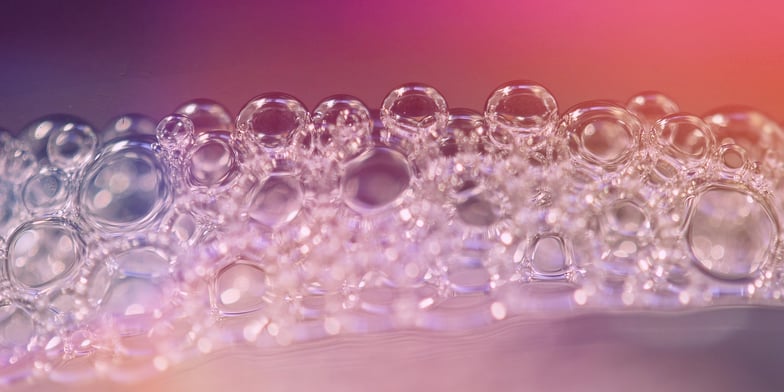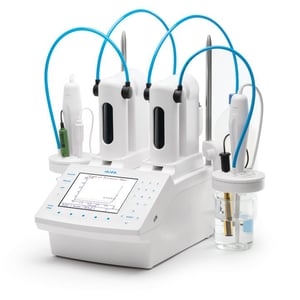 Whether you may be aware of it or not surface-active agents, or surfactants, have many essential uses in our everyday lives. They’re found in everything from our laundry detergent to motor oil.
Whether you may be aware of it or not surface-active agents, or surfactants, have many essential uses in our everyday lives. They’re found in everything from our laundry detergent to motor oil.
How Surfactants Work
Before we can talk about measuring surfactants, it’s important to know what they are and how they function in our lives.
One of their primary functions is to reduce tension at the surface or interface between two different phases or substances. They can also act as a medium between oil and water. This unique property makes surfactants ideal as detergents, dispersants, emulsifiers, and biocides.
Surfactants display these tension-reducing properties because they may contain one or more amphiphilic groups. Amphiphilic compounds are compounds that have an affinity for both polar and non-polar substances.
This means that one portion of the compound is attracted to water (hydrophilic) while the other is repelled by water (hydrophobic). Surfactants can be anionic, nonionic, cationic, and amphoteric. These categories refer to the charge of the water-loving portion of the compound:
- Cationic: Has a positive charge at the hydrophilic head.
- Anionic: Has a negative charge at the hydrophilic head.
- Nonionic: Has no charge at the hydrophilic head.
- Amphoteric/Zwitterionic: Has both positive and negative charges at the hydrophilic head.

Quaternary Ammonium Salts (Quats)
Quaternary ammonium salts are one kind of commonly used cationic surfactant. Cationic surfactants contain a positively charged ion (a cation) that carries the amphiphilic group, allowing them to absorb negatively charged substrates.
Due to these characteristics, these salts frequently serve as the active ingredient in antimicrobial and disinfectant products. These types of surfactants disrupt the cell membranes of microorganisms, which gives them their antimicrobial effect.
Measuring Cationic and Anionic Surfactants
Fortunately, the ability of surfactants to interact with many different substances make them easy to test. Due to its simplicity and accuracy, titration is a great fit for determining the active components in anionic and cationic surfactants.
In this method, the cationic or anionic surfactant is simply titrated with its counterpart. In other words, cationic surfactants are titrated with anionic surfactants and vice versa.
This means that a cationic compound, such as quaternary ammonium salt, is titrated potentiometrically in an aqueous medium with a standard solution of sodium lauryl sulfate (SLS), an anionic surfactant. A complex is formed between the quaternary ammonium compound and sodium lauryl sulfate. The complex that is formed then precipitates out of solution.
 Using a nitrate ion-selective electrode (ISE), the formation of the complex and precipitation corresponds to the change in potential (voltage) with a well-defined inflection point.
Using a nitrate ion-selective electrode (ISE), the formation of the complex and precipitation corresponds to the change in potential (voltage) with a well-defined inflection point.
The nitrate ISE is approved, along with surfactant electrodes, for the analysis of disinfectant quaternary ammonium compounds according to ASTM D5806, Standard Test Method for Disinfectant Quaternary Ammonium Salts by Potentiometric Titration. This method is ideal for testing quaternary ammonium salts, raw and final product, in a wide range of materials used for disinfection.
How We Help Make Surfactants Easy
Recently Hanna helped a company that makes disinfectant wipes. They were looking to determine the percentage of active ingredients by weight in their raw disinfectant solutions and final product.
The first step was understanding the active quat content of their materials. This is important for quality control and reporting purposes. As part of their manufacturing process, the wipe product is first soaked in a solution of quaternary ammonium compound, alcohol, and water. The roll of wipes are then sealed, packaged, and stored.
Hanna worked with the company to ensure that the transition to ASTM D5806 as an in-house method of analysis went smoothly. This included installation and training on an Automatic Titration System with a Nitrate Combination ISE, as well as sample analysis to ensure that the method fit the needs of their raw and finished product.

What you Need to Test Cationic Surfactants
Although the titration for the company above was performed using a proprietary mixture, the active component of any cationic surfactants can be determined with the same methodology. Download our free SOP for a full outline of what you will need, or request a quote from us.
We can also help you optimize and source chemicals to make the transition easy! Just get in touch with using one of the channels listed below.
That's why we've dedicated our blog as a helpful resource for you to use! Catch up on the latest products, explore industry trends, discover testing tips, learn how to improve results, and more. Got questions? Email sales@hannainst.com.


